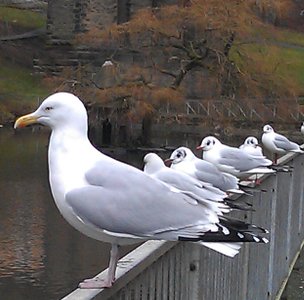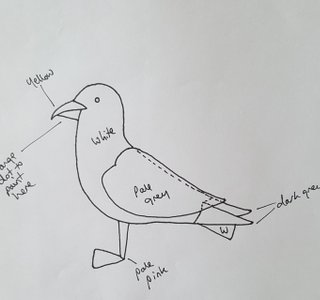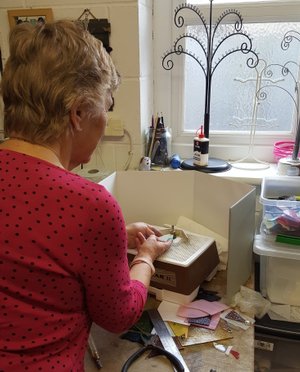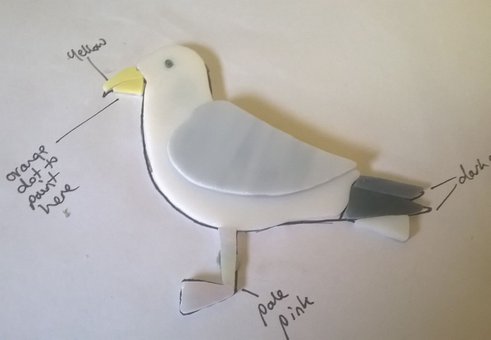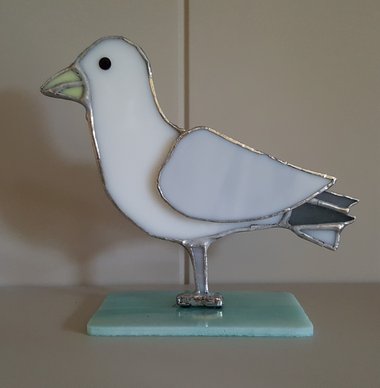About Stained Glass
Stained glass gifts are always different. No two items can ever look exactly the same which is part of the charm. First there are natural variations within a single sheet of coloured or textured glass. Then there are variations as each piece of a pattern is cut out using a hand-held glass cutter.
If you see an item made with coloured glass where the silver soldering looks absoultely perfect, or each item of the same design is exactly the same, this is unlikely to have been made using the hand copper foiling, soldering and patina method. Feel the weight too, does it feel right? It might not be glass. Also be aware of mass produced imports (you will be able to see these are not hand-made). It takes time and patience to make a stained glass gift and the beautiful variety is a very special part of this artistic process to be enjoyed for many years.
Your stained glass gift is built to last but does need a little care. Gently buff with a clean cloth to keep dust at bay taking care not to damage any decorative finishes such as beads or painting. If you hang your gifts in a window with a suction cup, make sure the window is clean and dry, then make sure the suction cup is firmly attached by gently tugging before hanging your decoration, then check every now and then to ensure it is still secure.
Stained glass gifts are resilient in general (we have had a candle holder in our garden for years, the soldering is a little weathered now but that adds a charm all of its own), but do take care of delicate joins is certain items.
Even though most items are made to order, there are some that we have made in advance as one-off designs, take a look for these in our shop and when they have gone they have gone!
The Design Process
Stained glass art can be inspired by many things. This photograph of a row of gulls in Scarborough on our beautiful North Yorkshire coastline was the inspiration for our popular seagull design.
It can take many sketches to produce something that can be translated into a stained glass pattern.
The Pattern
The next stage is to prepare the final pattern and mark up colours. Dotted lines indicate the main piece of glass has another attached, creating an overlap, in this case the wing.
This is where you might realise the pattern is not practical to reproduce in glass so needs tweaking or sometimes totally re-designed. We were lucky with this lovely gull who posed so well for our photo...
The art of stained glass is a skill developed over many years. It is a process involving constant learning, inspiration, design work and experimentation. One design leads to other ideas.
It also needs a lot of equipment like the grinder pictured above, used to make the edges of the glass smooth after it has been cut with a hand-held glass cutter.
The Making Process
Each piece of glass in the design is individually hand cut then laid over the pattern to ensure it all fits together. Each piece is then edged with self-adhesive copper foil and as each is foiled, it is placed onto a second copy of the pattern to keep it all in the correct order.
The artwork is now ready for soldering together, cleaning and the application of patina on the soldered edges to create the desired effect before being polished ready for the final touches.
As each piece of artwork is made like this, all by hand, natural variations will occur which adds to the charm. There are also natural variations in the glass itself.
The Finished Seagull
Our finished seagull available to order as this one is already happy in his new home.
Most birds and animals have a pretty black bead for an eye adding a little bit of life and character.
Stained glass artwork on stands have a felted base to protect your surfaces.

